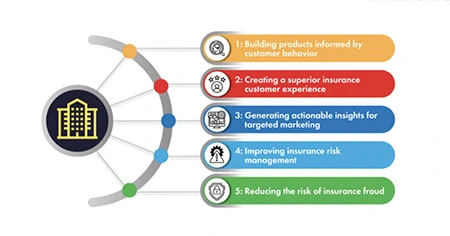Big Data-Driven Transformation in Automotive Production Systems
 Vishwanadham Mandala
Vishwanadham Mandala
Introduction
The automotive industry is undergoing a profound transformation fueled by the integration of Big Data into production systems. Traditional manufacturing models, once reliant on deterministic planning and human-driven decision-making, are evolving toward intelligent, data-driven ecosystems. With the rise of Industry 4.0, the Internet of Things (IoT), Artificial Intelligence (AI), and cloud platforms, Big Data analytics has become a strategic enabler for improving efficiency, reducing downtime, and enhancing quality across automotive production lines. This paradigm shift is not limited to process optimization but extends to predictive insights, supply chain resilience, and sustainable manufacturing.
The Role of Big Data in Automotive Manufacturing
Big Data in automotive production refers to the collection, storage, and analysis of large volumes of structured and unstructured data generated from diverse sources, including:
IoT-enabled sensors embedded in machinery, robots, and vehicles.
Enterprise Resource Planning (ERP) systems capturing production, logistics, and workforce data.
Quality inspection systems leveraging image recognition and real-time anomaly detection.
Customer and market data feeding into design and demand forecasting.
This multi-source data ecosystem enables manufacturers to derive actionable insights, creating a closed feedback loop where design, production, and usage data reinforce each other.
Key Areas of Transformation
1. Predictive Maintenance
Unplanned machine breakdowns are costly and disruptive. Big Data analytics uses sensor data (temperature, vibration, acoustic signals) to predict potential failures. Machine learning models can detect early warning signs, allowing maintenance teams to intervene proactively. This reduces downtime, extends asset lifespans, and ensures continuous production flow.
Equation Example:
If R(t) represents system reliability at time t, predictive maintenance aims to maximize the expected uptime:

2. Smart Production Planning
Production scheduling in automotive plants involves multiple constraints: demand fluctuations, supply delays, and resource availability. Big Data enables real-time optimization of production schedules by analyzing historical demand, supplier reliability, and machine utilization rates. Algorithms such as linear programming and reinforcement learning dynamically reallocate resources, ensuring optimal throughput.

3. Quality Assurance and Defect Reduction
Quality is a critical differentiator in the automotive industry. Computer vision systems powered by Big Data analytics can identify micro-level defects in welding, painting, or assembly. Data-driven statistical process control (SPC) allows manufacturers to identify process deviations earlier, thus reducing recalls and warranty claims.
Equation Example:
Defect probability can be modeled as:

4. Supply Chain Optimization
Global supply chains are vulnerable to delays, shortages, and disruptions. Big Data-driven visibility enhances end-to-end supply chain management, incorporating supplier performance data, geopolitical risks, and logistics tracking. Advanced predictive analytics helps automotive manufacturers minimize stockouts, reduce lead times, and maintain lean inventory systems.
5. Energy Efficiency and Sustainability
Automotive manufacturing consumes significant energy resources. Big Data analytics supports energy optimization by identifying peak loads, wasteful processes, and alternative renewable integration. Data-driven energy models reduce carbon emissions, aligning production systems with sustainability goals.
Equation Example (Energy Efficiency):

Challenges in Implementation
Despite its transformative potential, the adoption of Big Data in automotive production systems faces several challenges:
Data Silos: Integration of diverse data sources across production units remains complex.
High Initial Costs: Infrastructure for IoT, data lakes, and analytics requires significant investment.
Cybersecurity Risks: Increased connectivity heightens vulnerability to data breaches and cyberattacks.
Workforce Skills Gap: Transition to data-driven manufacturing requires reskilling operators and engineers in analytics and AI tools.
Data Quality Issues: Inaccurate or incomplete data can compromise decision-making.
Future Outlook
The convergence of Big Data with emerging technologies promises a new era of hyper-intelligent automotive factories. Key trends include:
Digital Twins: Virtual replicas of production systems for real-time simulation and optimization.
AI-Driven Robotics: Self-learning robots adapting to variations in assembly tasks.
Edge Computing: Reducing latency by processing data closer to production lines.
Blockchain for Supply Chains: Enhancing transparency and traceability in global sourcing.
As manufacturers embrace Industry 5.0, the integration of human expertise with AI and Big Data will redefine collaboration in production systems. The result will be highly flexible, sustainable, and resilient automotive manufacturing ecosystems.

Conclusion
Big Data is more than a technological upgrade; it is the foundation for a transformational shift in automotive production systems. By harnessing predictive analytics, smart scheduling, quality assurance, and sustainable practices, manufacturers can achieve unprecedented efficiency and resilience. While challenges such as cybersecurity and workforce adaptation remain, the long-term benefits of Big Data-driven transformation far outweigh the risks. As the automotive industry evolves toward electrification, connected vehicles, and autonomous mobility, data-driven production will be the cornerstone of competitive advantage and innovation.
Subscribe to my newsletter
Read articles from Vishwanadham Mandala directly inside your inbox. Subscribe to the newsletter, and don't miss out.
Written by
